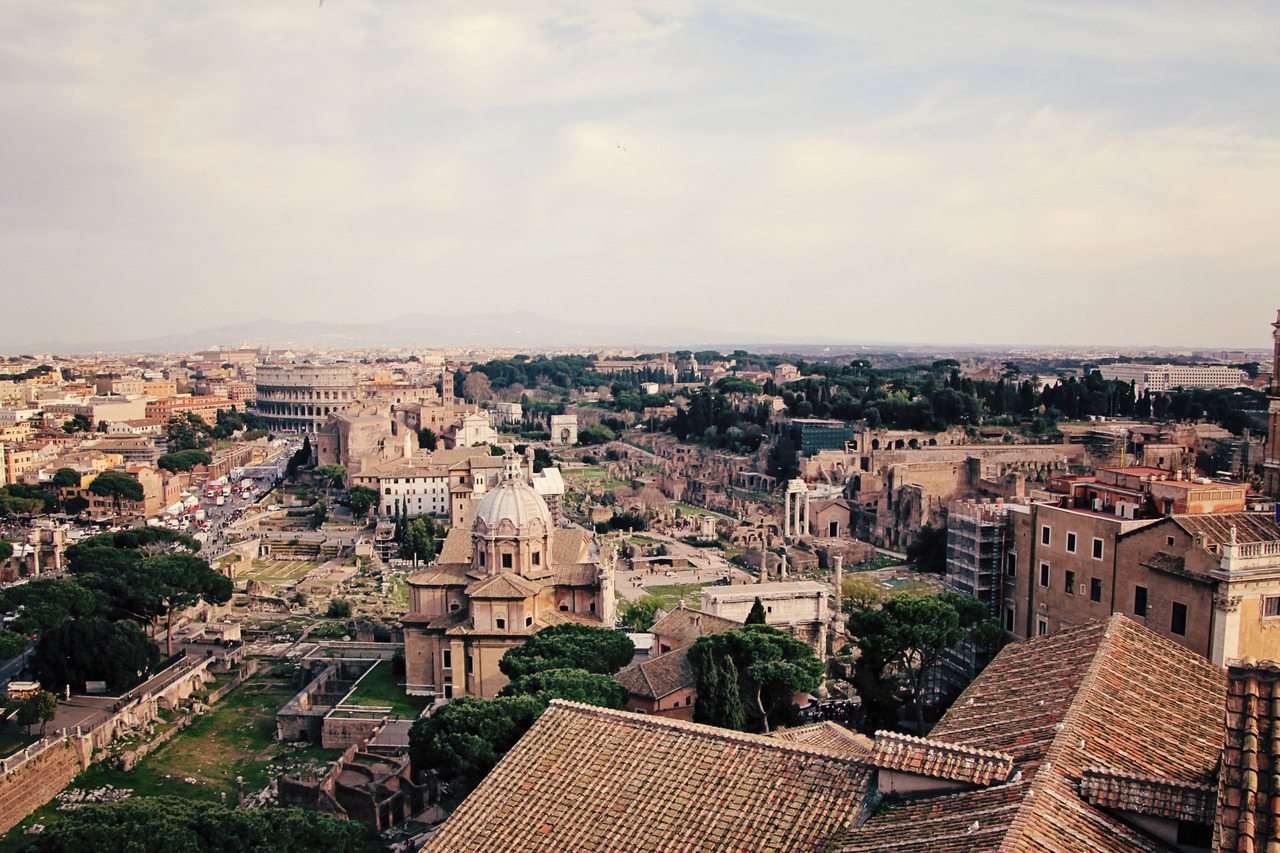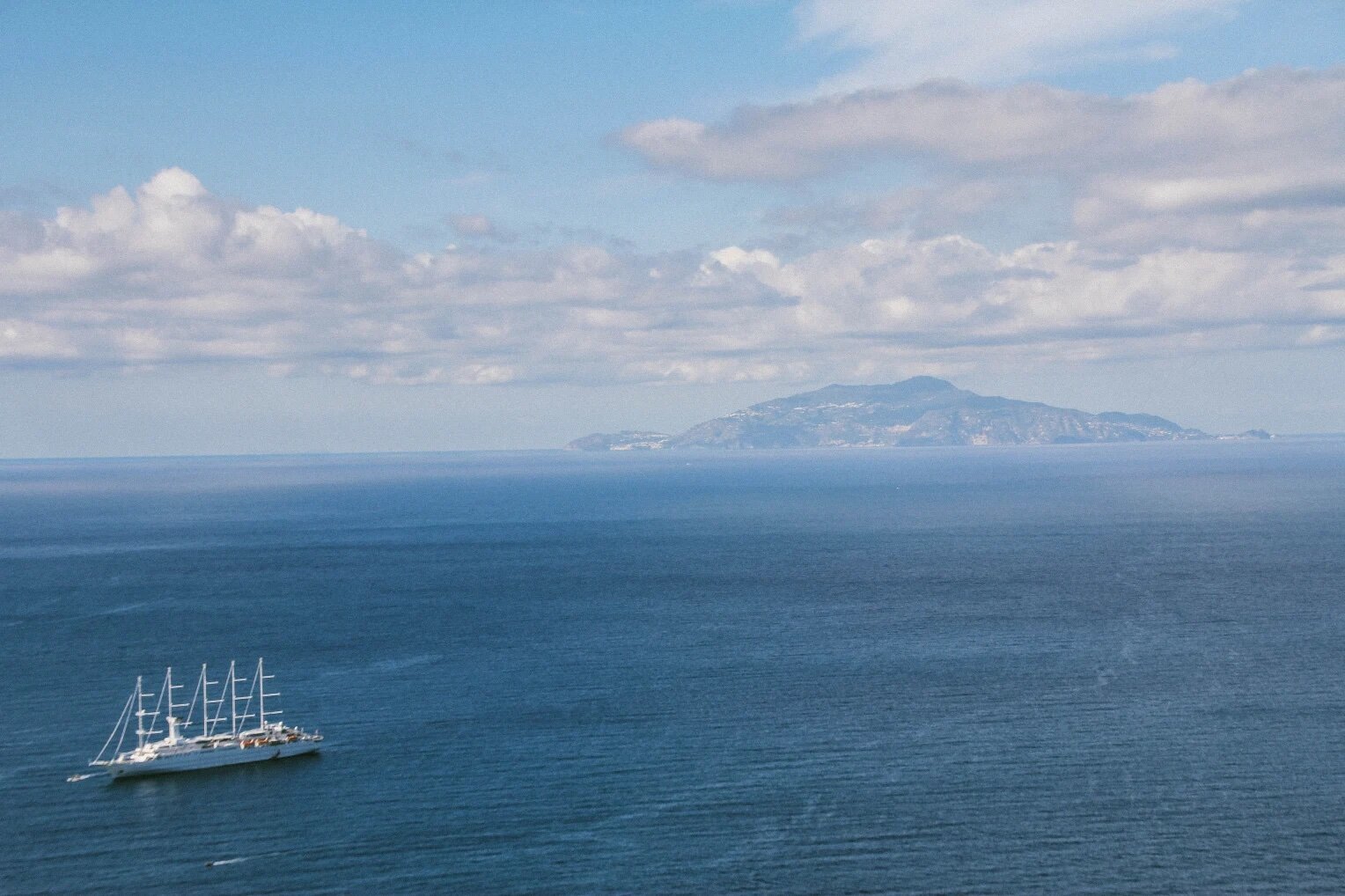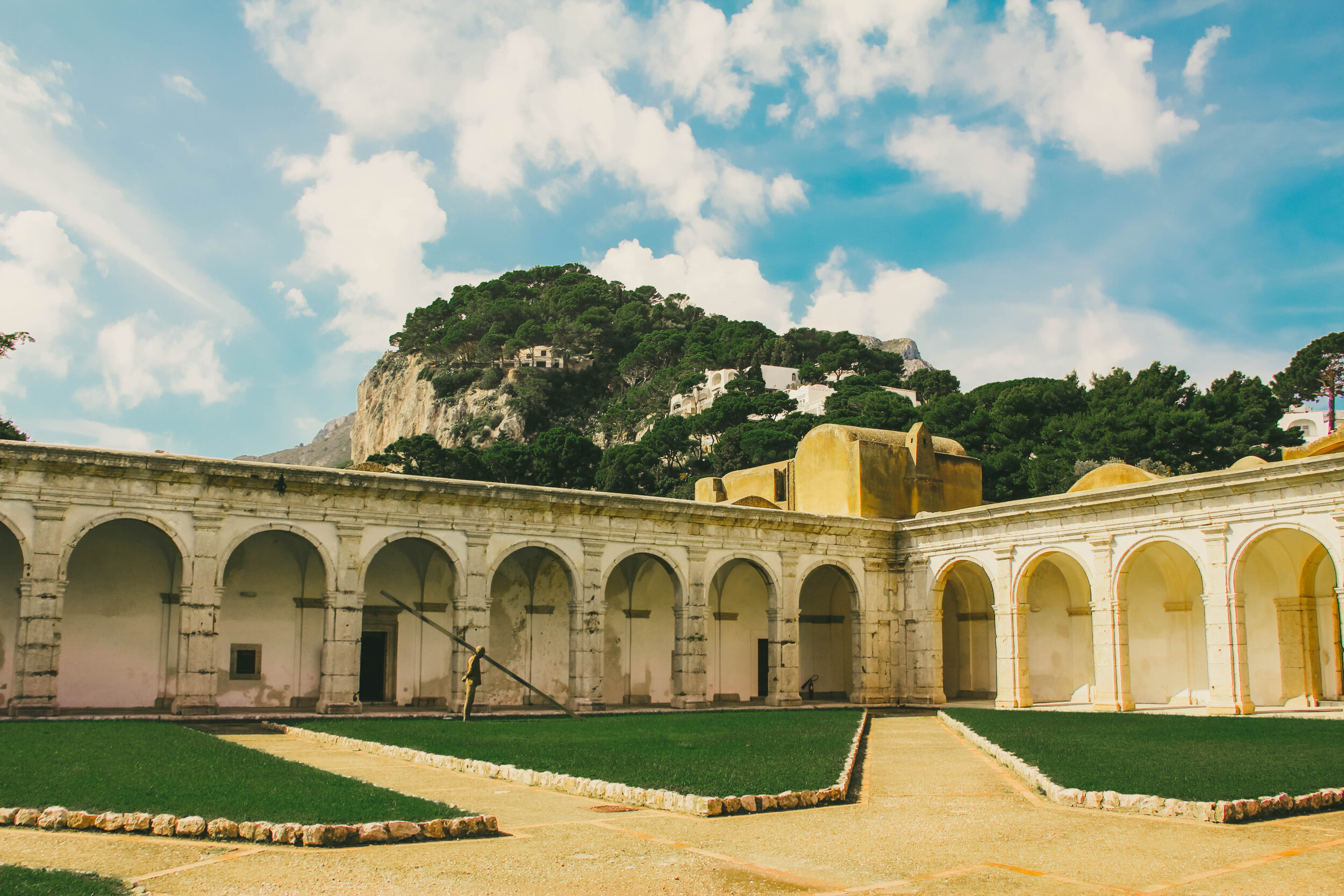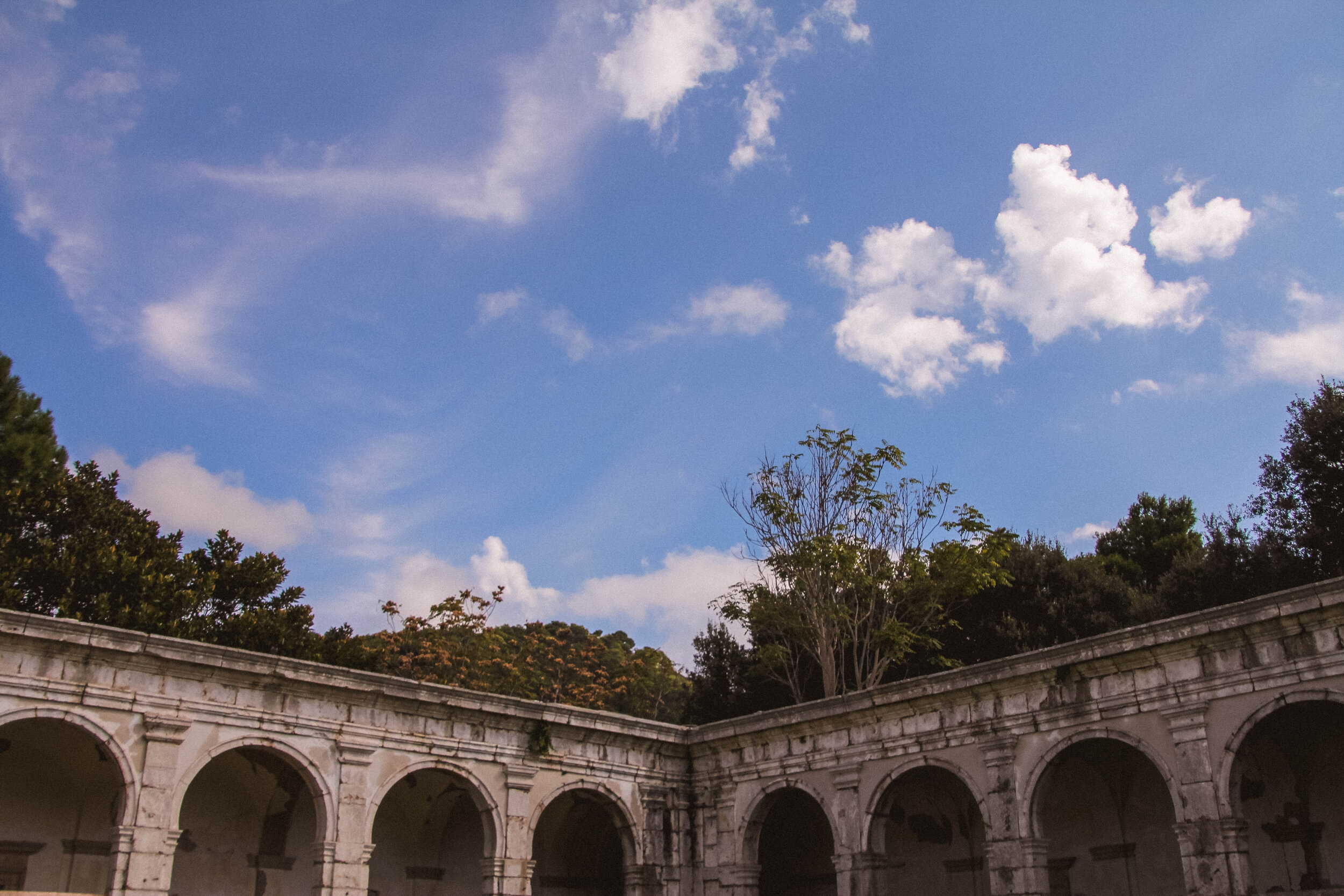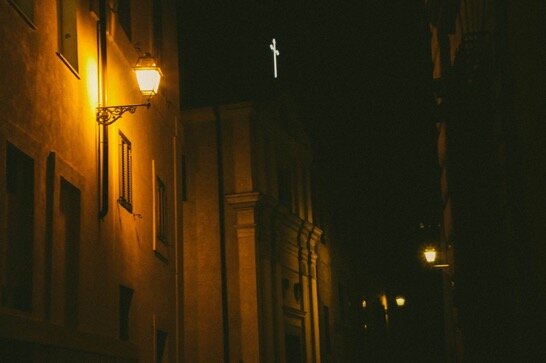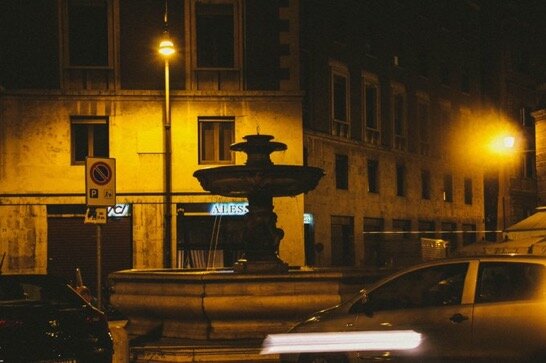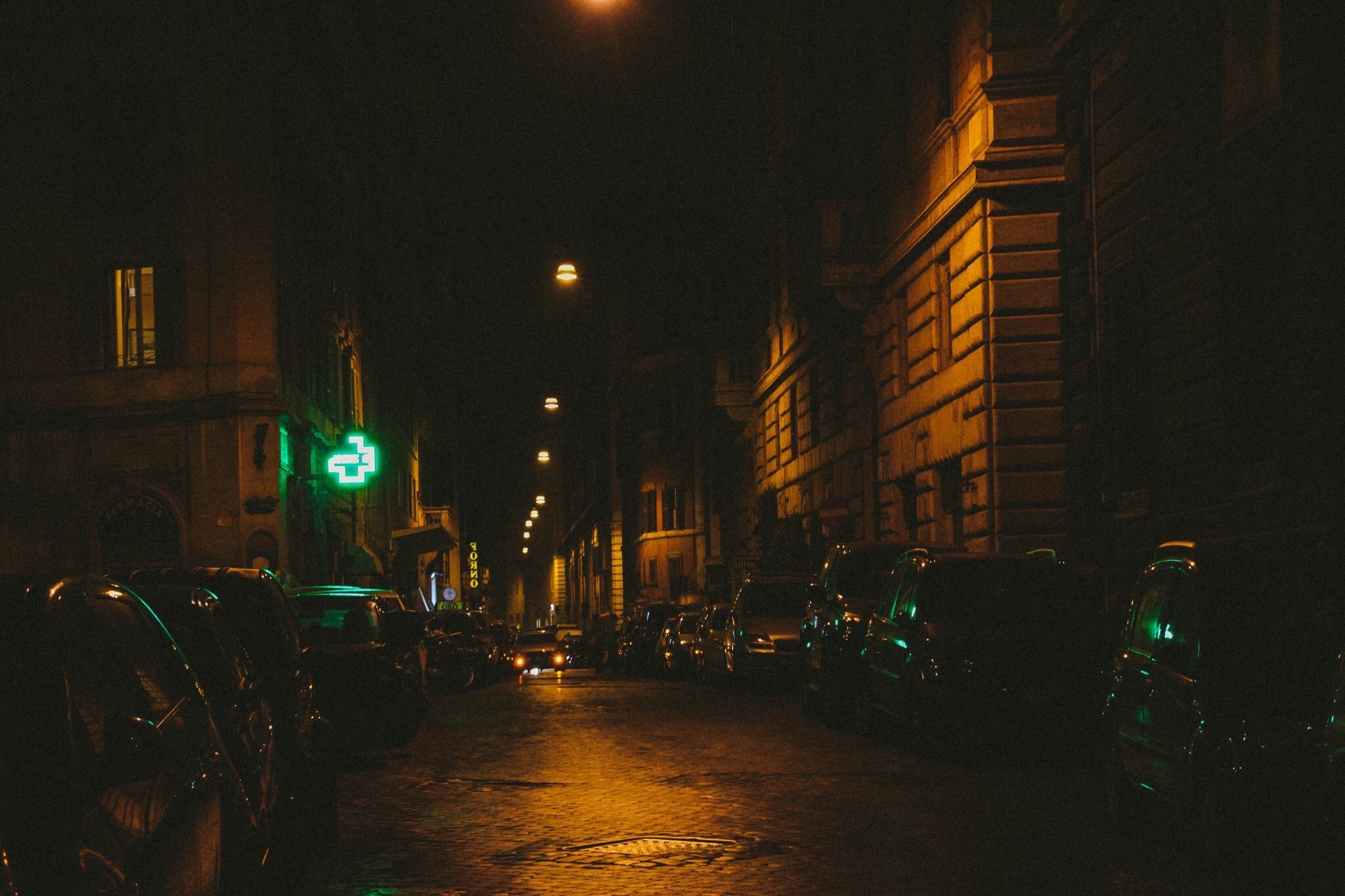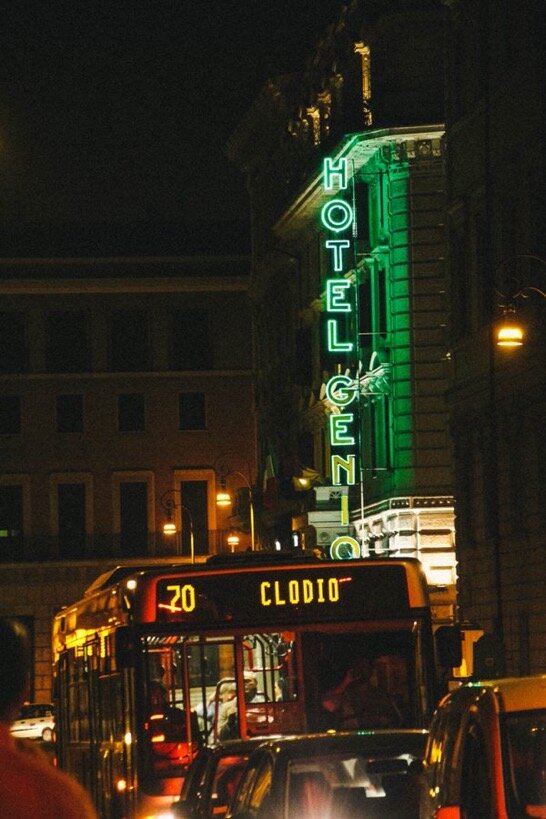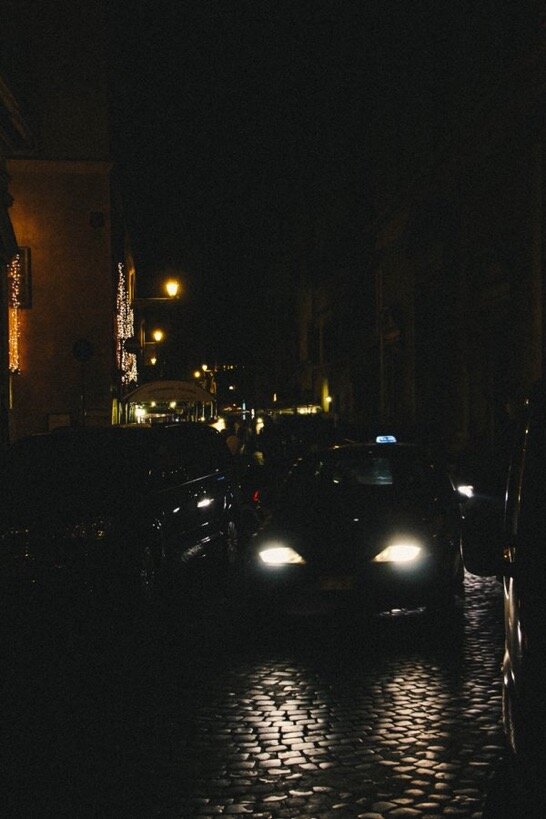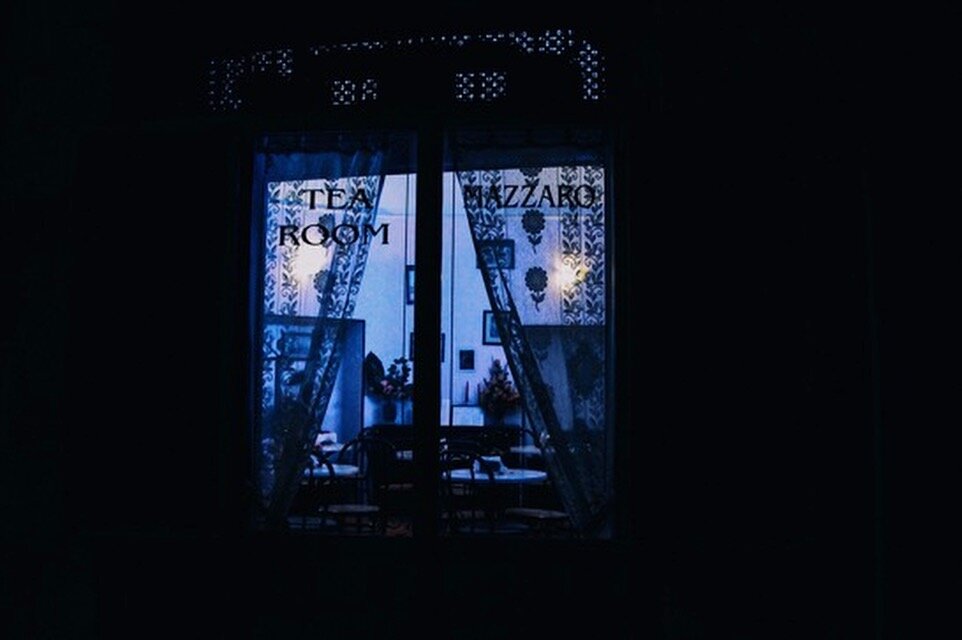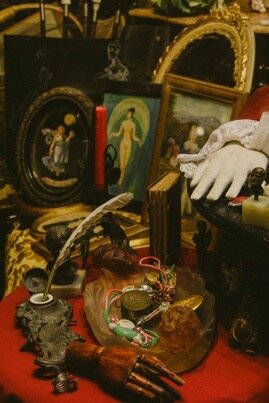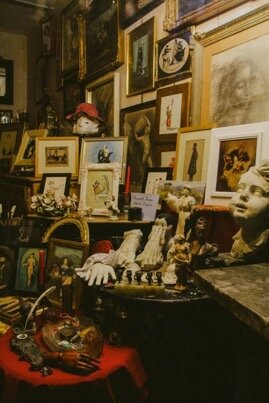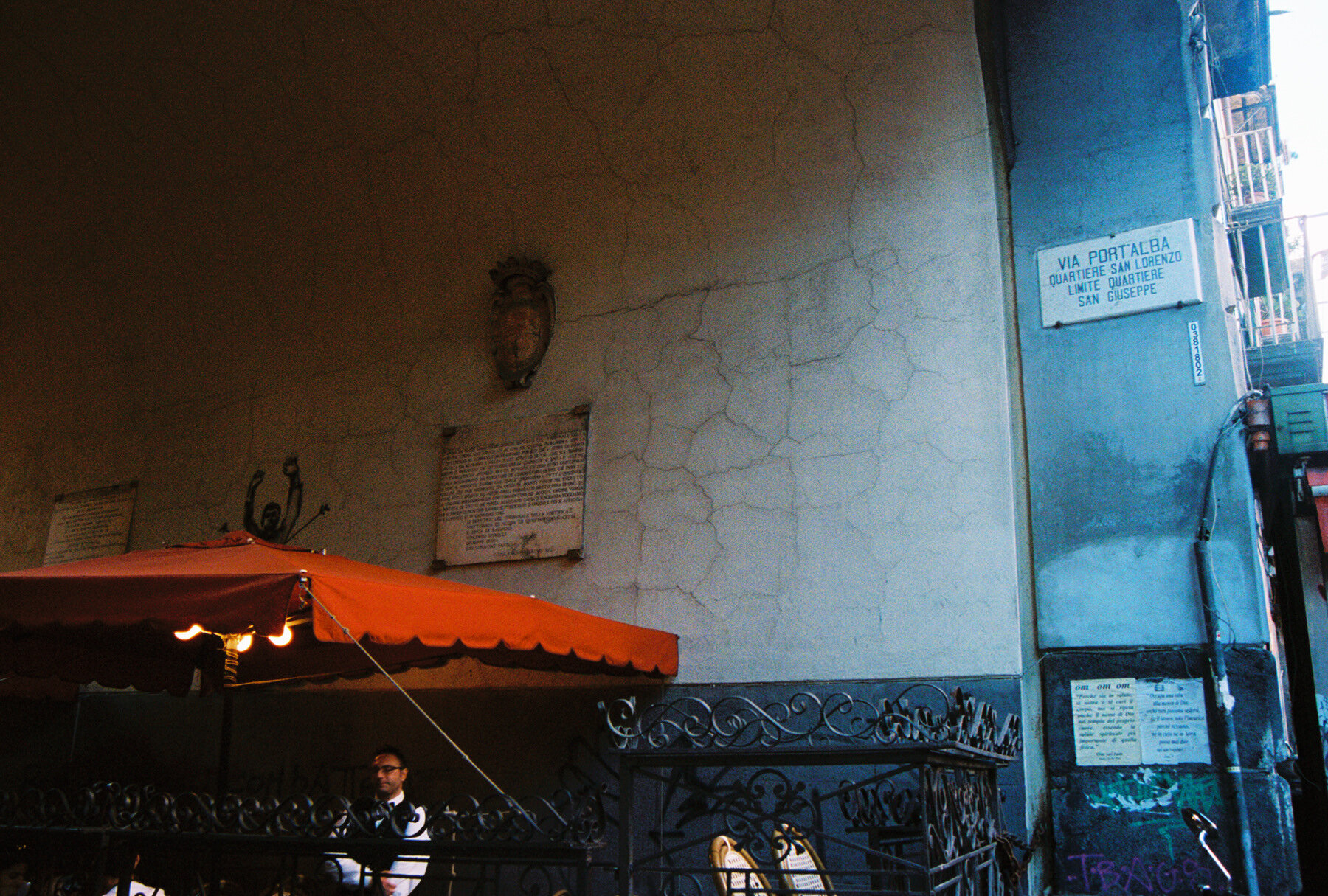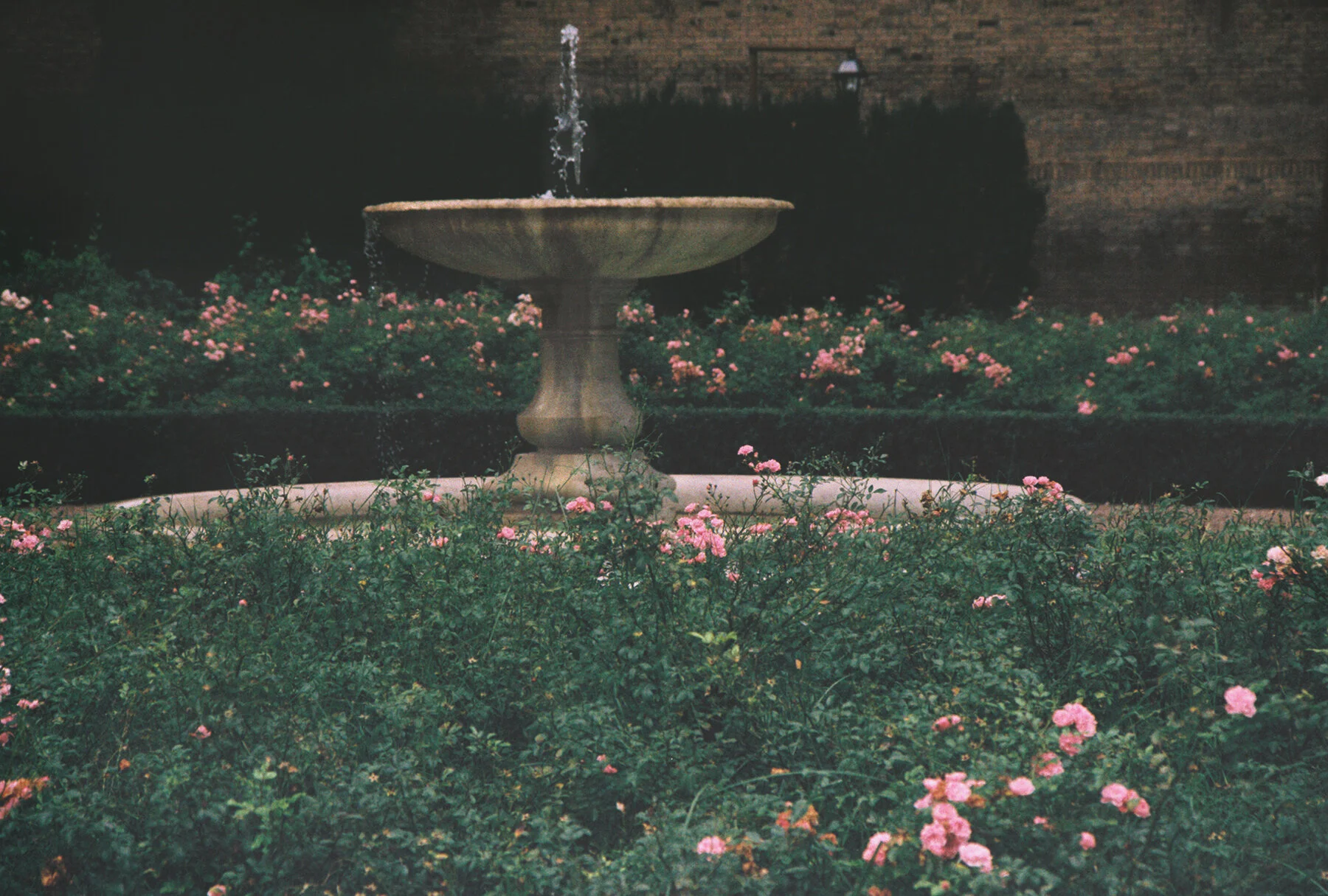Why did we return to Capri and Anacapri as often as we could over the years? Because it awakened something in us. Something old and something beautiful, something that spoke of the past and of the present. History mixed with the passion of good living now. Great weather, fresh sea air, an island of perfumed gardens and wildflower meadows, delicious local cuisine, great people, and a way of life that just slowed down enough to make beauty and happiness and health and a good spot of sunshine more important than anything else for awhile.
When you’re rambling around on Capri, you get to wander around sunny hills and winding walkways against a dramatic panoramic view of the sea, the jagged coastline of ancient rocks, and the subdued green outlines of the neighboring islands a boat ride away. The azure skies touch the jewel green blue waters of the Tyrrhenian sea surrounding the “Emperor’s isle”. There are so many ideal walks and hikes along this magical place, including wanders through ancient ruins and in beautiful small art villa museums. History is everywhere. Passions and the senses are awakened in such a paradiso.
Walking up old pathways from Capri to the top of the island, Anacapri, you find many lovely gardens and cozy homes tucked away behinds little gates and walls. In between modern Capri (that still feels like an old technicolor movie) and rambling meadows and soaring cliffs over patches of the sea and the odd boat twinkling in the water under the bright Campanian sun. La Nina garden and house, topped by a bright terracotta pinecone, is a private residence, as is the modern small villa tucked pristinely behind an elegant garden and promenade. A shy old dog watches over the vine tomatoes and lemon trees and mini private vineyards and small olive trees in another gated yard. His eyes the color of the vibrant pottery.
Along the way from the Villa Tiberius hike is the 1900s Villa Lysis, a Greek Revival palazzo designed by a troubled French aristocrat for his exile from scandal back in Paris. The house is now a museum, and one can wander to and from each beautifully designed room, and even spy the large pool like bathtub from where the count took his own life in the 1920s after the bacchanal years had lost their charm. The home is sparsely furnishes, however, and it really is the dazzling views from the house into the gardens and toward the Tyrrhenian Sea, and the islands stretching beyond it, that make the fairly arduous hike worth it.
The Greek Revival architecture and the gorgeous garden and columns of Villa Lysis are worth the visit alone, but this spot is even more attractive in its easy proximity to a MUST NOT MISS: Villa Jovis, the Roman ruins of the Emperor Tiberius. These attractions are higher up on the island. Lower on the island is a historical Monastery turned art museum, the Charterhouse of St. Giacomo, built in 1371 it is the oldest historic building on the Island of Capri.
The interestingly empty cloisters are easy to walk through, and lead to the small Diefenbach Museum, with great paintings depicted a German Romantic view of Capri. It is a quick visit and is a nice addition to a day or two trip. There is also a small modern art museum with interesting pieces, and fantastic local fine art photographs and films. In the summer (pre pandemic) there are cultural events held there in the quiet, pretty inner outside square of the former iconic monastery.
There is, along Via Giuseppe Orlandi, (“Anacapri's main street lined with whitewashed houses and local shops), sits the bright red facade of a building, architecturally unique among its plain-faced traditional island neighbors for its strange and fantastic decorations. This is Casa Rossa, built between 1886 and 1899 by the eccentric American colonel John Clay MacKowen (1842 - 1901) alongside an Aragonese tower dating from the end of the 1400's, and representing a perfect example of the typical eclectic residence-museum which was very much in fashion at the end of the 19th century.” - capri.net
Casa Rossa is a small villa art museum which can be a quick visit if you don’t have a lot of time, but is a definite must, and the convenience of its location near the OTHER cannot miss, the Villa San Michele Museum (and the most glorious garden and views of the sea on earth), - both on Anacapri (almost top of the island)
Villa Lysis
HOW TO GET THERE
Getting to Villa Lysis: from Capri's Piazzetta, there are two ways to get to the villa. Along Via Longano and Via Sopramonte, or along Via Le Botteghe, Via Fuorlovado, and Via Croce. Both routes take you to the "Cross" where you will take Via Tiberio to the intersection with Via Lo Capo.
Walking time: From the Piazzetta, it's about a 45 minute walk uphill, so make sure you are wearing comfortable shoes!
Hours: April-May-September- October 10 am -6 pm; June-July-August 10 am -7 pm; November-December 10 am-4 pm. Last admission 30 minutes before closing time
Closing day: Wednesday
Ticket: EUR 2 (free for children under 12)
Opening times and prices may change. Please check them at info-points in Marina Grande or in Piazzetta.
Events at Villa Lysis
In the summer (pre-pandemic times) Villa Lysis has hosted concerts, exhibitions, plays, small concerts, and ballets, as well as private events.
Web site: www.villalysiscapri.com - Email: info@villalysiscapri.com
From https://www.capri.net/en/s/villa-lysis-4
Suggestions: Nearby Sights to Visit
Near Mount Tiberius, not far from Villa Lysis, there are two other sights to visit which are equally interesting and make the walk up to the villa worth the effort!
Villa Jovis: the residence of the Roman emperor Tiberius, this is the most important archaeological site on Capri and is at the very top of Mount Tiberius. Villa Lysis and Villa Jovis are joined by a number of different walking trails through the countryside.
Opening & Hours: from June 1st to September 30th open every day from 10:00 am to 7:00 pm (last entrance 6:15 pm) - April - May - October from 10:00 am to 5:00 pm (closed on Tuesday) - March, November and December from 10:00 am to 4:00 pm (closed on Tuesday) . Close in January and February. Entrance until 30 min. before closing time.
Tickets: EUR 6 (free for EU citizens under 18)
Parco Astarita: a small park right above the sea located next to Villa Jovis.
Hours: 10 am to 3 pm
Closed: Tuesday.
Free.
LATEST COVID UPDATE HOURS: (CHECK WHEN YOU GET TO ITALY AS THEY MAY CHANGE)
Opening Hours:
August: Every day from 10.00 to 19.00.
September - October: Every day from 10.00 to 18.00.
November - December - January from 10.00 to 16.00. Weekly closing on Wednesday
Last entrance 30 minutes before closing
Click here for the brochure in english.
Villa Lysis is a cultural heritage site, property of the City of Capri.
This wonderful location is used also to celebrate civil marriages, but not to host wedding receptions.
To organize private event at Villa Lysis, you should contact the offices of the City Hall at:
culturaturismo@cittadicapri.it
protocollo.cittadicapri@legalmail.it
ENGLISH SITE www.villalysiscapri.com/villalysis_en.html
SPANISH SITE www.villalysiscapri.com/villalysis_sp.html
——————————————————————————
Villa San Michele (HOUSE OF Axel Munthe)
WITH amazing gardens and sweeping views of Capri and Anacapri.
Villa San Michele is open but is subject to change due to the Delta Variant of Covid.
Many cultural sites and Museums in Italy require proof of vaccination OR a negative covid test within two days of visiting. You can be tested in Italy. It is often easy to see a doctor (and affordable, if you can’t contact a Hotel Doctor - which are expensive - visit a Medical Farmacia (supplies prescriptions, not just health, beauty or wellness supplies) with a CROSS LIGHT on the outside of the pharmacy… and ask for someone who speaks your language (preferably English or obviously Italian) to see how you can obtain a rapid covid test.
Please follow them on social media, Instagram: villasanmichele, Facebook: Villa San Michele - Isola di Capri,
The staff wishes to thank all visitors and friends of the Villa and hope to see you again soon.
www.villasanmichele.eu check the website when you arrive!
Instagram: @villasanmichele, @cafecasaoliv







